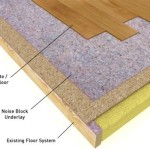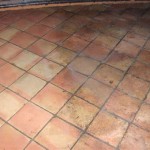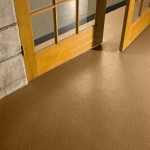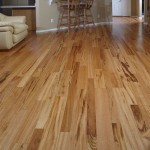How to Remove Vinyl Floor Adhesive From Concrete
Removing vinyl floor adhesive from concrete is a common challenge encountered during flooring renovations or replacements. The adhesive, designed for strong bonding, can leave a stubborn residue that requires specific techniques and potentially multiple attempts to fully eliminate. The effectiveness of the removal process depends on several factors, including the type of adhesive used, the age of the adhesive, and the porosity of the concrete surface.
Understanding the properties of the adhesive is crucial before starting the removal process. Vinyl floor adhesives are typically either water-based or solvent-based. Water-based adhesives are generally easier to remove, responding well to moisture and heat. Solvent-based adhesives, formulated for greater durability and water resistance, require stronger solvents for effective removal.
Proper preparation is essential for a successful adhesive removal project. This includes gathering the necessary tools and materials, ensuring adequate ventilation, and protecting surrounding surfaces from damage. Ignoring these preliminary steps can lead to inefficient removal, potential damage to the concrete, or exposure to hazardous materials.
Key Point 1: Assessing the Adhesive and Concrete
The initial step involves identifying the type of adhesive and assessing the condition of the concrete. A visual inspection can often provide clues about the adhesive type. Water-based adhesives tend to be lighter in color and may exhibit a brittle texture. Solvent-based adhesives are often darker and more resilient. Testing a small, inconspicuous area with water or a solvent can further aid in identification. If water softens the adhesive, it is likely water-based. If a solvent is required for softening, it is likely solvent-based.
The condition of the concrete is also a critical factor. Porous concrete will absorb more adhesive, making removal more difficult. Cracks or imperfections in the concrete can trap adhesive, requiring more targeted removal methods. Before proceeding, clean the concrete surface by sweeping or vacuuming to remove loose debris, dirt, and remnants of the old vinyl flooring. This provides a clearer view of the adhesive and prevents it from being ground into the concrete during the removal process.
Consider wearing appropriate protective gear during the assessment and removal process. This includes gloves to protect skin from chemical exposure and eye protection to prevent splashes or debris from entering the eyes. If working in an enclosed space, a respirator may be necessary to avoid inhaling harmful fumes.
Key Point 2: Mechanical Removal Techniques
Mechanical removal techniques involve using tools to physically scrape or grind away the adhesive. These methods are effective for removing thick layers of adhesive and can be used as a primary removal method or in conjunction with chemical solvents. Several tools are commonly used for mechanical adhesive removal, each offering varying levels of aggressiveness and suitability for different situations.
A floor scraper with a long handle is a versatile tool for removing large areas of adhesive. The scraper features a sharp blade that is angled to effectively lift the adhesive from the concrete surface. Applying consistent pressure and working in overlapping strokes will maximize the scraper's efficiency. The blade should be kept sharp, and dull blades should be replaced or sharpened to prevent excessive force and potential damage to the concrete.
A concrete grinder, equipped with a diamond grinding wheel or a scraping attachment, is a more aggressive option for removing stubborn adhesive. Grinders are particularly useful for removing thin layers of adhesive that have penetrated the concrete surface. When using a grinder, it is crucial to wear appropriate safety gear, including a dust mask or respirator, to protect against airborne particles. Start with a low grit grinding wheel and gradually increase the grit as needed to avoid damaging the concrete.
A heat gun can be used to soften the adhesive before scraping. Applying heat to the adhesive makes it more pliable and easier to remove with a scraper. Hold the heat gun a few inches away from the adhesive and move it slowly back and forth to avoid overheating or scorching the concrete. Be cautious when using a heat gun, as it can generate high temperatures. Wear heat-resistant gloves and avoid prolonged exposure to the heat.
Before using any mechanical removal method, test a small, inconspicuous area to ensure that it does not damage the concrete. Apply gentle pressure initially and gradually increase the force as needed. Avoid gouging or scratching the concrete surface, as this can create additional work and potentially weaken the structural integrity of the floor.
Key Point 3: Chemical Solvent Application
Chemical solvents are often necessary to dissolve and loosen adhesive that is resistant to mechanical removal methods. Selecting the appropriate solvent is crucial for effective removal and to minimize the risk of damaging the concrete or creating hazardous fumes. Several solvents are commonly used for removing vinyl floor adhesive, each with its own advantages and disadvantages.
Citrus-based solvents are a relatively safe and environmentally friendly option for removing water-based adhesives. These solvents are derived from citrus fruits and have a pleasant odor. They are generally effective at softening water-based adhesives, making them easier to scrape away. Apply the citrus-based solvent to the adhesive and allow it to soak for the recommended time, typically 15-30 minutes, before attempting to scrape it away.
Methylene chloride-based solvents are powerful and effective at removing both water-based and solvent-based adhesives. However, they are also highly toxic and require careful handling. Methylene chloride can cause skin and respiratory irritation, and prolonged exposure can lead to more serious health problems. When using methylene chloride, work in a well-ventilated area and wear gloves, eye protection, and a respirator.
Acetone is another solvent that can be used to remove vinyl floor adhesive. Acetone is a strong solvent that can dissolve many types of adhesives, but it is also highly flammable and can damage certain types of concrete. Use acetone only in well-ventilated areas and avoid exposing it to open flames or ignition sources.
Regardless of the solvent used, it is essential to follow the manufacturer's instructions carefully. Apply the solvent to the adhesive and allow it to soak for the recommended time. Use a scraper or putty knife to remove the softened adhesive. Repeat the process as needed until all of the adhesive is removed. After removing the adhesive, thoroughly clean the concrete surface with a detergent and water to remove any remaining solvent residue.
Dispose of used solvents and rags properly according to local regulations. Many solvents are considered hazardous waste and require special disposal methods. Do not pour solvents down the drain or dispose of them in the trash.
Neutralizing the concrete after using any chemical solvent is a crucial step often overlooked. This involves applying a neutralizing solution, such as a mixture of baking soda and water, to the concrete surface. The neutralizing solution helps to remove any remaining solvent residue and restore the pH balance of the concrete, preparing it for the application of new flooring.
After the adhesive is removed and the concrete is cleaned, it is important to inspect the surface for any remaining residue or damage. Use a bright light to examine the concrete closely and address any imperfections before installing new flooring. Small cracks or holes can be filled with concrete patching compound to create a smooth and even surface.
Proper ventilation is paramount throughout the entire process. Open windows and doors or use fans to circulate air and remove fumes. If the work area is poorly ventilated, consider using a respirator to protect your lungs from harmful vapors. Regular breaks are also essential to prevent fatigue and minimize exposure to chemicals.
The successful removal of vinyl floor adhesive from concrete requires a systematic approach, careful assessment, and the use of appropriate tools and materials. By following these guidelines and taking necessary safety precautions, the concrete surface can be prepared for a new flooring installation, ensuring a long-lasting and aesthetically pleasing result.
Ultimately, the chosen method will depend on the specific circumstances, including the type and amount of adhesive, the condition of the concrete, and the available resources. A combination of mechanical and chemical methods may be necessary to achieve the desired outcome. Patience and persistence are key, as removing stubborn adhesive can be a time-consuming process.

The Fastest Way To Remove Bonded Vinyl Flooring From Concrete

How To Remove Linoleum Adhesive From A Concrete Floor

How To Remove Carpet Glue From Concrete 4 Proven Ways Network

How To Remove Adhesive From Concrete Floors 5 Diy Ways Get Glue Off

How To Remove Carpet Glue From Concrete Floor Step By Guide

Best Ways To Take Out Even Impossible Remove Glue From Floors

How To Remove Vinyl Tiles From Concrete Commercial Flooring Suppliers Supplies

How To Finish Removing Linoleum Adhesive For Tile On Concrete Floor Hometalk

How To Remove Carpet Glue From Concrete 4 Proven Ways Network

Removing Flooring Mastics And Adhesives 2024 03 07 Restoration Remediation
See Also







